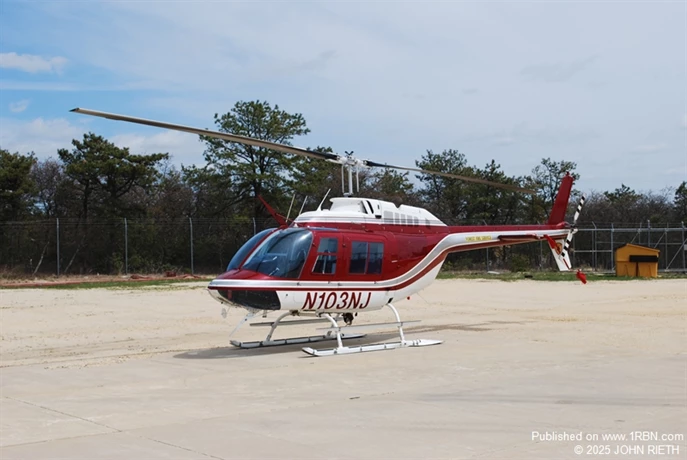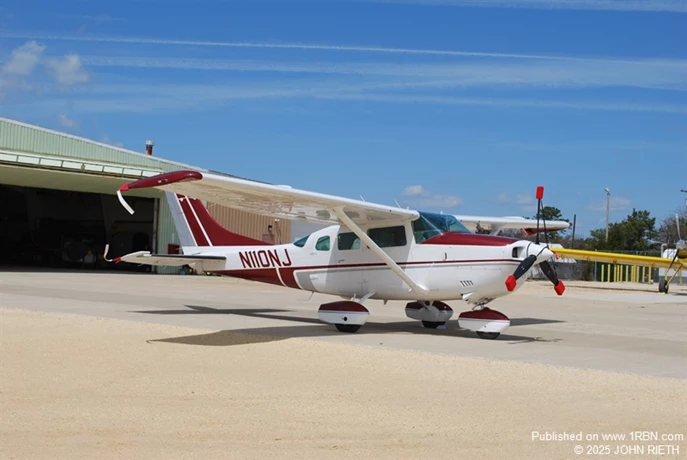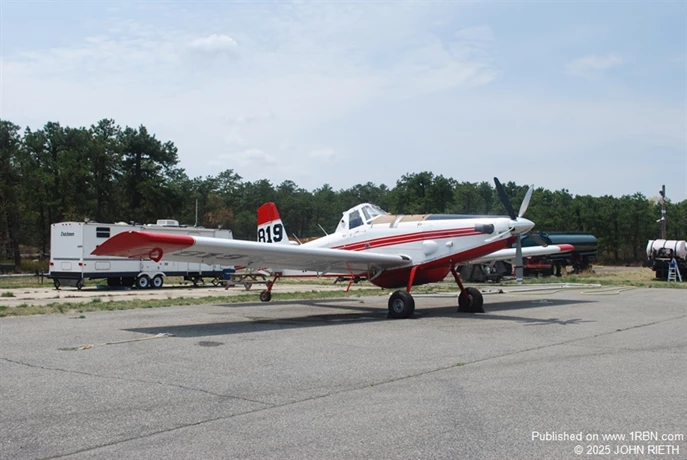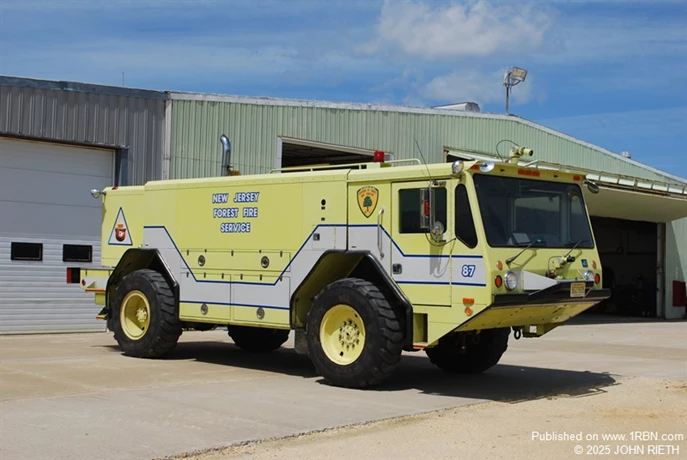NJ Forest Fire Service Aviation


Photo by JOHN RIETHDelta 7 one of 3 UH1H Hueys

Photo by JOHN RIETHDelta 3 one of 2 Jet Rangers

Photo by JOHN RIETHDelta 10 one of 3 fixed wing air aircraft operated by the NJ Forest Fire Service.

Photo by JOHN RIETHTanker 81 an 801 Air Tractor operated by Coastal Air Strike under contracted by the NJFFS.

Photo by JOHN RIETHTanker 61 an 601 Air Tractor Operated by Downstowns Airocrop Corp. under contract by the NJFFS.

Photo by JOHN RIETHThe Crash truck at Coyle Air Attack Base. it is a 1992 Amertek CF4000 4x4 CRF 1000/1200
The New Jersey Forest Fire Service, is the agency that is responsible for protection of 1.3 million acres of forest and wildlands on public and private lands through out the state. With an authorized strength of 90 full time fire fighters, and over 1200 part time or as needed firefighters.
The use of aviation in wildland fire fighting in the United States was first started in New Jersey by Colonel Leonidas Coyle. Coyle, who was at the time State Forest Fire Warden, pioneered the use of early aircraft to observe and map wildfires, and pass on that information to commanders on the ground. Early aircraft were leased or some were bought by the state of New Jersey. In 1930s the state bough a Mailwing aircraft, later a Beechcraft Stagger airplane was bought. In the 1960s Stearman Model 75s were used. In the 1960s. and 1970s helicopters from private contractors were on duty throughout the state during the spring fire season, they used mostly Bell 47 helicopters.
In 1967 to 2001, up to ten 300-gallon Ag Cat Bi Planes were under contract. Two in North Jersey, 5 in Central Jersey, and 3 in South Jersey. Also in the 1980s, the State Forest Fire Service started to acquire aircraft from the federal government’s Federal Personal Property Program. First two, Bell Jet Rangers were acquired, a Bell 47, then three UH-1H Hueys. In addition, a Piper Cub, Cessna 162, and a Cessna 206 were acquired. An ex–New Jersey State Police Cessna 206 was reassigned to the New Jersey Forest Fire Service in the early 2000s.The fixed wing aircraft are used for Air Attack (Command and Control), observations, and detection.
Contracted aviation, changed in a dramatic way after 9-11, the cost of contract aircraft, exploded. The Forest Fire Service primary contractor was the Downstown Aircrop Corp. After 9-11 the contract was for less and less aircraft. Some of the aircraft that were included on the contracts were, a M18-B Dromader with a 660-gallon tank. In 2011 several of the Downstown owed Ag Cats were refurbished into 400-gallon Turbo Cats. The Older Ag Cats only could hold 300 gallons, and were very slow. Later the contract was split between two contractors Downstown with a 602 Air Tractor, and Flecher Flying Service (Now Coastal Air Strike) with an 802 Air Tractor. Air Tractors are turbo prop, and can fly much faster than the older aircraft. The 602 Air Tractor holds a 600-gallon tank, and the Air Tractor 802s have 800-gallon tanks. Downstown has two additional 602 Air Tractors, the others are available on a call as needed basis. Costal Air Strike has 4 other 802 Air Tractors from Florida, available on a call as needed resource.
The Aviation Unit of the NJFFS currently operated from two permeant state owned air attack bases. The aviation headquarters is at Coyle Field near the Woodland Township. An additional Air Base is at Airoflex-Andover Airport in Andover. Two seasonal air bases, including Miller Airport in Berkeley Township, and Downtowns Airport near Forest Grove. In addition, over a dozen auxiliary bases throughout New Jersey can be used if needed. One full time pilot, 8 part time pilots, one full time aviation mechanic, one air base manager, and several part time mechanics & support personal operate 9 aircraft.
Currently the aviation unit has a fleet of 6 helicopters, and 3 fixed wing aircraft. Delta 1 is a 1956 Bell 47-G2 which is used for mainly used for training, and observation. A small 75-gallon bucket can be used by this aircraft for fire suppression. Delta 2 is a 1975 Bell 206 B Jet Ranger II which is primarily used for observation, but a small 100-gallon Bambi Bucket can be used for suppression. Delta 3 is a 1969 Bell 206 A/B Jet Ranger which is also used for observation. Delta 5 and Delta 6 are both 1966 Bell UH-1H Hueys. Each aircraft can use a 320-gallon Bambi buckets for fire suppression. Each aircraft can long line equipment and supplies in both mountain and remote areas of the state. Delta 7 is a 1974 Bell UH-1H Huey, with the same capabilities as the other two Huey’s.
Three fix wing aircraft are also operated by the New Jersey Forest Fire Service. These are all used for air attack (command and control), observation, and detection of wildfires. Delta 10 a 1986 Cessna 206, which is the only aircraft in the fleet owned by the State of NJ. All others are owned by the federal government, and obtained by the FEPP or Federal Excess Personal Property Program. Delta 11 is a 1986 Cessna 206, and the last aircraft is Delta 15 which is a 1966 Cessna 182.
In addition, currently the New Jersey Forest Fire Service contracts two SEATs or single engine air tankers. Two Air Tractors are on contract. Additional SEATs can be requested from the contractors when needed. Normally the contract aircraft are on duty during the spring fire season, usually 30 days or so from some time in April-May. Other times of the years, they can be called back into service, base on their availability as a call as needed resource. All of the Forest Fire Service Operated Air Bases are staffed during high fire danger through out the year, as needed.
Currently, the contract air attack bases are Miller Airpark in Berkeley Township Ocean County where Tanker 81 which is an 802 Air Tractor with 800 gallons of water or retardant is operated from, and Tanker 61 is a 601 Air Tractor a 600-gallon tanker based at Downstown Airport near Franklin Township Gloucester County NJ. If additional Air Tractors are called in as needed, they will have the ID of Tanker 82,83, 62,63, ect.
The New Jersey National Guard, has several Black Hawk Helicopters fitted with 550-gallon Bambi Buckets. These can be requested as well, and has been used in the past including the 2007 Warren Grove Fire, as recent as the Jones Rd Fire in 2025.
At Coyle Field an airport crash fire apparatus is in-service to provide protection at the air base. It is a 1992 Amertek CF4000 4x4 CRF 1000/1200 crash truck
Currently, the New Jersey Forest Fire Service Aviation Unit has an Assistant Division Forest Fire Warden that oversee all operations, a full time Pilot, a full time Aviation Mechanic, nine part -time call as needed pilots, and several part time aviation mechanics.
The Aviation Unit prides itself as one of the most respected Wildland Fire Fighting Aviation Units in the nation.








